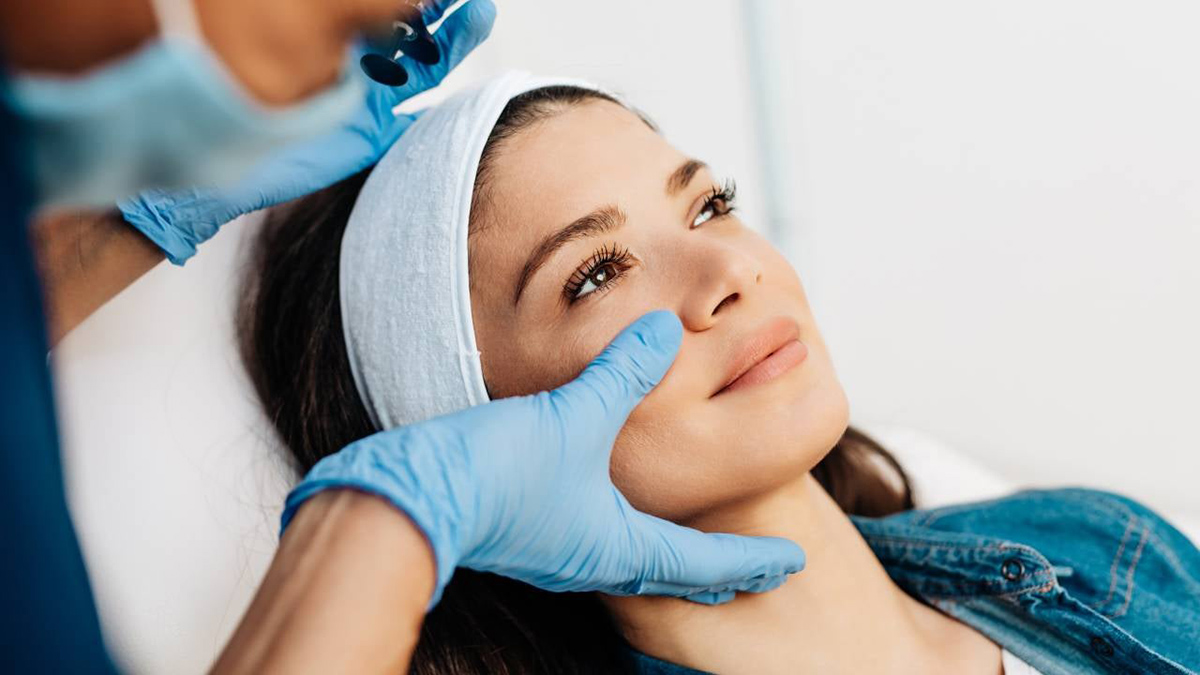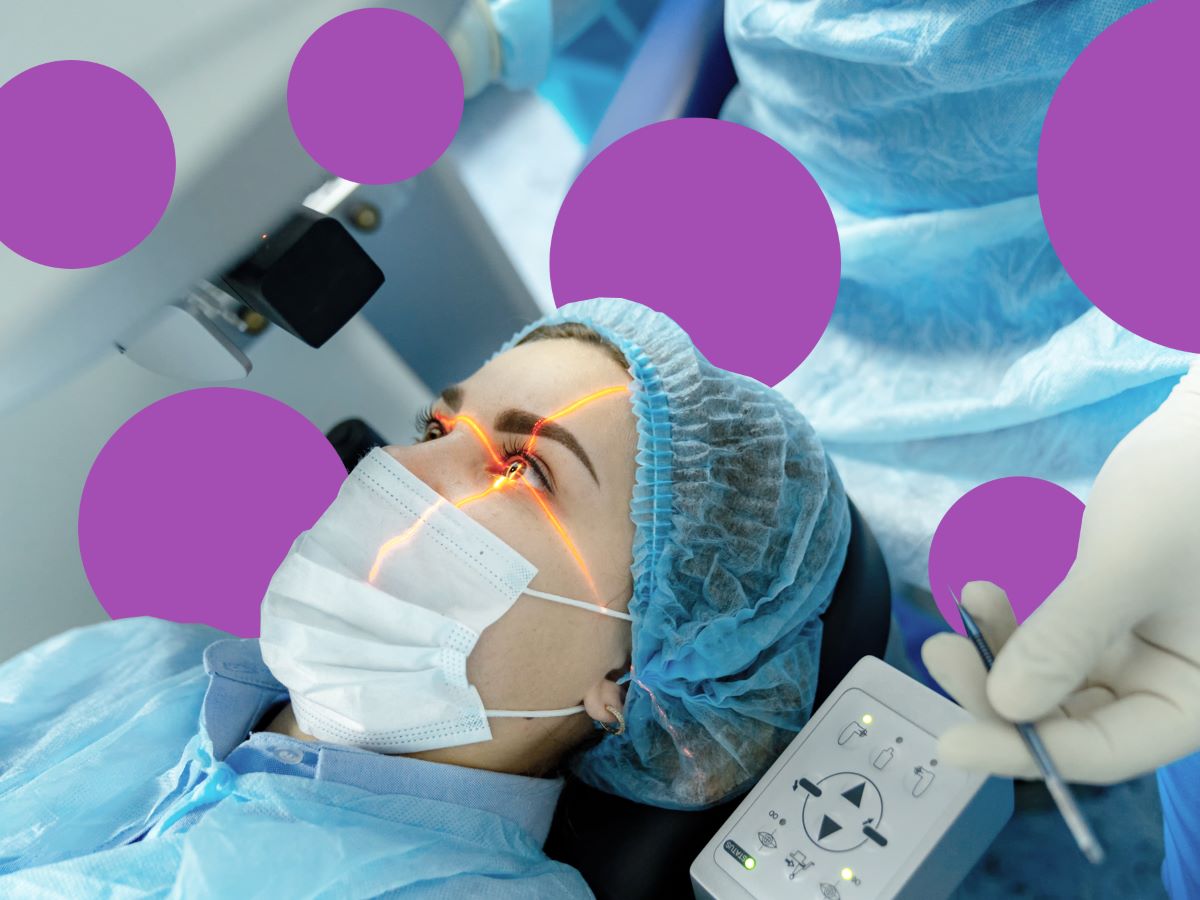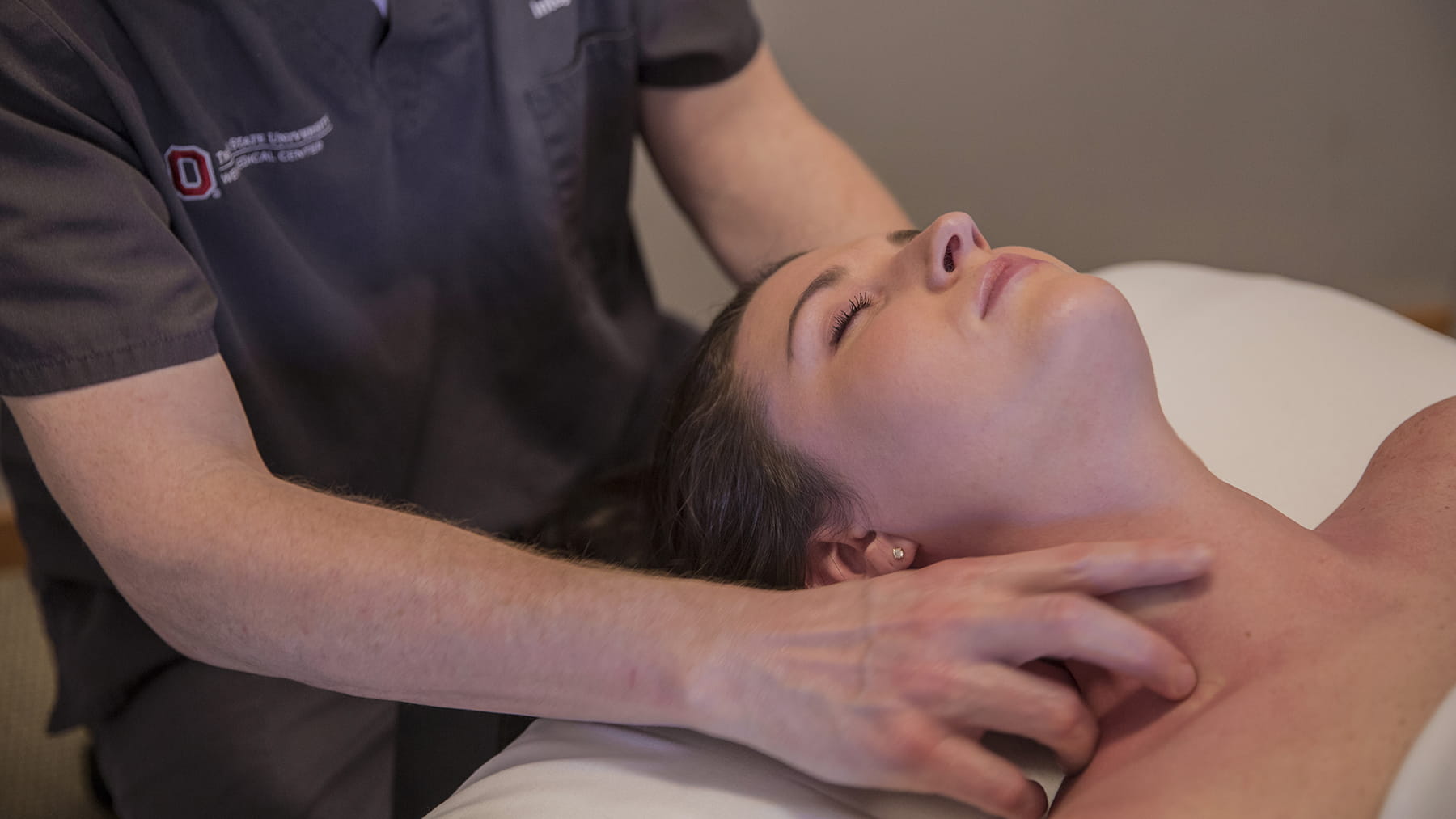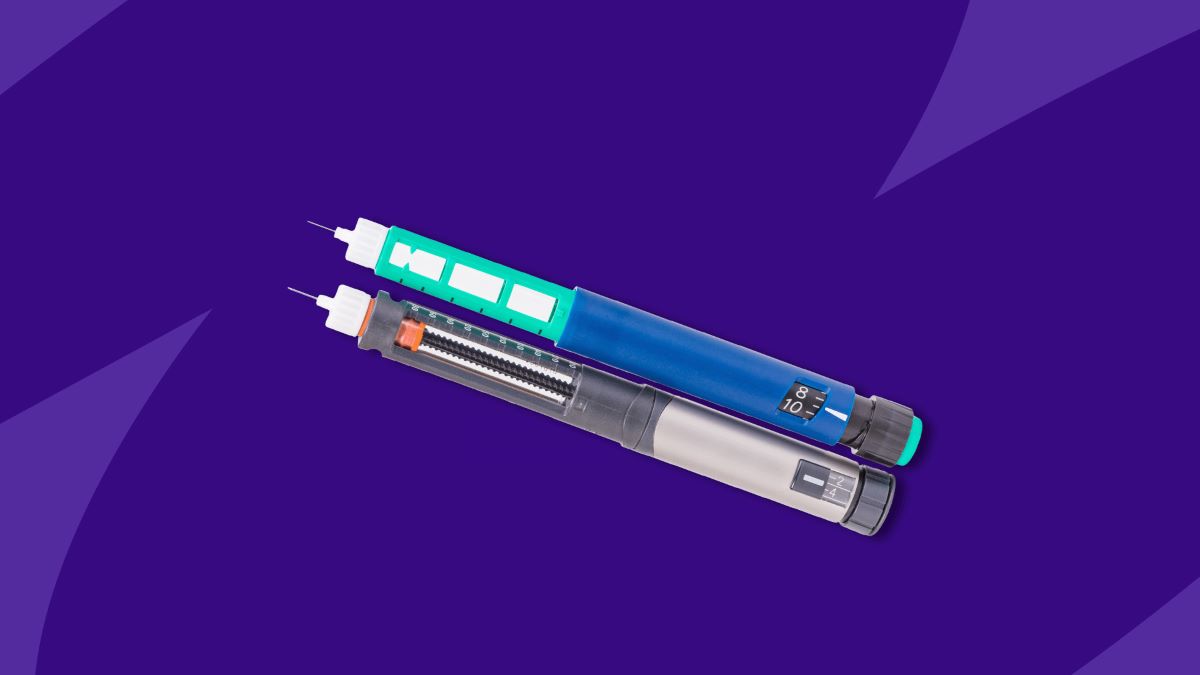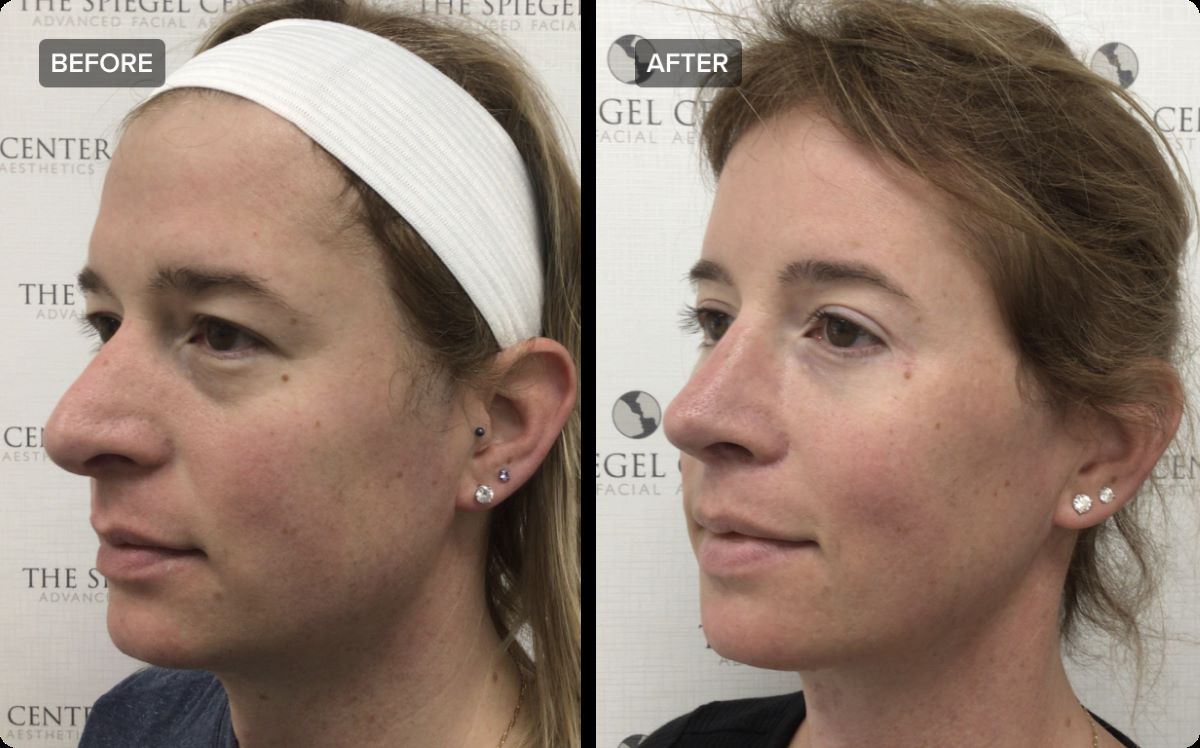

Finance
How To Get Eyelid Surgery Covered By Insurance
Modified: December 12, 2023
Learn how to finance your eyelid surgery and get it covered by insurance with our comprehensive guide. Maximize your chances of approval and minimize out-of-pocket expenses.
(Many of the links in this article redirect to a specific reviewed product. Your purchase of these products through affiliate links helps to generate commission for LiveWell, at no extra cost. Learn more)
Table of Contents
- Introduction
- Understanding Eyelid Surgery
- Insurance Coverage for Eyelid Surgery
- Steps to Get Eyelid Surgery Covered by Insurance
- Consultation with an Ophthalmologist or Plastic Surgeon
- Document Medical Necessity
- Obtain Pre-authorization from Insurance Company
- Coordinating with the Medical Team and Insurance Provider
- Submitting Claims and Supporting Documentation
- Following up with Insurance Company
- Conclusion
Introduction
Welcome to the world of finance! In today’s fast-paced and ever-evolving economic landscape, having a solid understanding of finance is crucial. Whether you’re an individual looking to manage your personal finances or a business owner seeking to optimize your financial strategies, having a strong grasp of financial principles can make all the difference.
Finance is a broad field that encompasses various aspects, including banking, investments, insurance, and more. It plays a vital role in every aspect of our lives, from managing day-to-day expenses to making long-term investment decisions.
As an SEO expert with deep finance knowledge, I am here to guide you through the intricate world of finance and provide you with the insights, tips, and strategies you need to make informed financial decisions.
Through comprehensive and engaging articles, I will break down complex financial concepts into easily digestible information. From understanding the basics of budgeting and saving to navigating the complexities of tax planning and investment strategies, I will cover a wide range of topics to cater to your finance needs.
My goal is to empower you with the knowledge and tools necessary to take control of your finances and achieve your financial goals. Whether you’re looking to build an emergency fund, save for a down payment on a house, or plan for retirement, I will provide you with the guidance you need to make it happen.
In addition to providing you with expert financial advice, I will also ensure that all articles are optimized for search engines. By incorporating appropriate keywords and utilizing SEO best practices, I will help increase the visibility and reach of the articles, making it easier for readers like you to find the information you need when you need it.
So, buckle up and get ready to embark on a financial journey like no other. Together, we will unravel the mysteries of finance and equip you with the knowledge and skills to navigate the financial landscape with confidence.
Stay tuned for the upcoming articles where we will delve deeper into specific financial topics, providing you with practical insights and actionable steps to improve your financial well-being.
Understanding Eyelid Surgery
Eyelid surgery, medically known as blepharoplasty, is a cosmetic procedure that aims to improve the appearance of the eyelids. It involves removing excess skin, fat, and muscle from the upper and/or lower eyelids to create a more youthful and refreshed look.
There are several reasons why people opt for eyelid surgery. Some individuals may have droopy or sagging eyelids, which can make them appear tired or older than they actually are. Others may have puffy bags under their eyes, giving them a perpetually tired or worn-out appearance. Eyelid surgery can help address these issues and restore a more youthful and vibrant look to the eyes.
While eyelid surgery is mainly performed for cosmetic purposes, it can also have functional benefits. Excess skin on the upper eyelids can impair peripheral vision and make daily activities, such as driving or reading, more challenging. By removing the excess skin, eyelid surgery can potentially improve vision and enhance overall quality of life.
It’s important to note that eyelid surgery is a surgical procedure and, like any surgical intervention, carries risks and considerations. It is crucial to consult with a qualified and experienced ophthalmologist or plastic surgeon to determine if you are a suitable candidate for the procedure and to discuss the potential risks and benefits.
During the consultation, the surgeon will evaluate your eyelids, discuss your goals and expectations, and explain the surgical techniques that would be most suitable for your unique case. They will also outline the recovery process and any potential side effects or complications that may arise.
It’s essential to have a realistic understanding of what eyelid surgery can and cannot achieve. While it can significantly improve the appearance of the eyelids, it cannot address other facial concerns such as wrinkles, crow’s feet, or brow sagging. In some cases, combining eyelid surgery with other facial rejuvenation procedures may be recommended to achieve the desired aesthetic outcome.
Overall, understanding the nuances of eyelid surgery is crucial to make an informed decision. By consulting with a qualified healthcare professional and having realistic expectations, you can determine if eyelid surgery is the right option for you and take the necessary steps to achieve your desired outcome.
Insurance Coverage for Eyelid Surgery
When it comes to the cost of eyelid surgery, one of the most common concerns is whether or not it is covered by insurance. Insurance coverage for eyelid surgery can vary depending on several factors, including the nature of the surgery and the medical necessity.
In general, if eyelid surgery is performed solely for cosmetic purposes, it is typically not covered by insurance. Cosmetic procedures are considered elective and are not considered medically necessary. However, there are cases where insurance may provide coverage for eyelid surgery if it is deemed medically necessary.
Medical necessity refers to situations where eyelid surgery is required to address functional issues or to improve overall health and well-being. This may include cases where the excess skin on the upper eyelids impairs vision or when the drooping eyelids cause significant discomfort or interfere with normal daily activities.
To determine whether insurance will cover eyelid surgery, it is important to consult with your insurance provider and review your policy. Some insurance companies may require documentation and thorough evaluation to establish medical necessity. They may also have specific criteria that need to be met before coverage is granted.
In some cases, insurance companies may require pre-authorization for the procedure. This means that you will need to submit documentation and receive approval from your insurance provider before undergoing the surgery. Failure to obtain pre-authorization may result in your insurance denying coverage and leaving you responsible for the full cost of the surgery.
It’s important to note that even if insurance does cover eyelid surgery, you may still be responsible for certain out-of-pocket expenses such as deductibles, co-pays, and any costs that exceed the coverage limits set by your insurance policy.
Understanding the intricacies of insurance coverage for eyelid surgery is crucial to avoid any surprises or unexpected expenses. It’s wise to work closely with your healthcare provider and insurance representative to determine the extent of coverage and to understand your financial obligations.
Remember, each insurance policy is unique, and coverage can vary. It’s always recommended to review your policy, ask questions, and clarify any uncertainties before proceeding with eyelid surgery.
Steps to Get Eyelid Surgery Covered by Insurance
Obtaining insurance coverage for eyelid surgery can be a complex process, but with the right approach and understanding of the requirements, it is possible. Here are the key steps to follow in order to increase your chances of getting your eyelid surgery covered by insurance:
- Consultation with an Ophthalmologist or Plastic Surgeon: The first step is to schedule a consultation with a qualified ophthalmologist or plastic surgeon. They will assess your eyelid condition and determine if the surgery is medically necessary.
- Document Medical Necessity: During the consultation, your healthcare provider will thoroughly evaluate your eyelids and document any functional issues or symptoms you are experiencing. This may include taking photographs, conducting visual field tests, or obtaining other relevant medical records.
- Obtain Pre-authorization from Insurance Company: Contact your insurance provider and inquire about their requirements for pre-authorization of eyelid surgery. They may request specific forms or documentation, such as medical records, photographs, and a detailed letter from your healthcare provider explaining the medical necessity of the procedure.
- Coordinating with the Medical Team and Insurance Provider: Work closely with your healthcare provider and insurance representative to gather the necessary documents and information required for pre-authorization. Ensure that all paperwork is complete and accurate to expedite the approval process.
- Submitting Claims and Supporting Documentation: After obtaining pre-authorization, schedule your surgery and ensure that the necessary documentation is submitted before the procedure takes place. This may include pre-operative test results, surgical notes, and any other relevant documents required by your insurance provider.
- Following up with Insurance Company: After the surgery, submit the necessary claims to your insurance company along with any post-operative documentation. Carefully review any explanations of benefits or insurance statements to ensure that the correct amount is being billed and paid.
It’s important to note that each insurance company has its own guidelines and requirements, and the process may vary. It is essential to communicate openly with your healthcare provider and insurance representative throughout the entire process to ensure that you are fulfilling all necessary steps and providing the required information.
Keep in mind that not all insurance companies will cover eyelid surgery for cosmetic reasons, even if you meet the medical necessity criteria. Therefore, it is crucial to thoroughly review your insurance policy and understand the specific coverage limitations and exclusions related to eyelid surgery.
By following these steps and actively engaging with your healthcare provider and insurance company, you can increase your chances of getting your eyelid surgery covered by insurance and reduce the financial burden associated with the procedure.
Consultation with an Ophthalmologist or Plastic Surgeon
When considering eyelid surgery, it is crucial to schedule a consultation with a qualified ophthalmologist or plastic surgeon who specializes in oculoplastic surgery. This initial step is essential to assess your specific case and determine if eyelid surgery is the right option for you.
During the consultation, the ophthalmologist or plastic surgeon will examine your eyelids, evaluate your overall eye health, and discuss your goals and expectations. They will also review your medical history to ensure that you are a suitable candidate for the procedure.
It’s important to be prepared for the consultation by gathering any relevant medical records or test results related to your eye health. This information will help the healthcare provider gain a comprehensive understanding of your condition and determine the medical necessity of the procedure.
During the examination, the healthcare provider will assess the appearance and functionality of your eyelids. They will determine if you have excess skin, fat, or muscle that is impacting your vision or causing discomfort. They may also evaluate the presence of puffiness, sagging, or drooping eyelids, which can affect your overall facial appearance.
The healthcare provider will listen to your concerns and expectations regarding the outcome of the procedure. They will discuss the potential risks, benefits, and alternatives to eyelid surgery. They may also use visual aids or computer-generated images to help you visualize the possible outcomes.
It’s important to ask questions during the consultation to ensure that you fully understand the procedure, the recovery process, and any potential complications. Consider discussing the anticipated results, the timeline for recovery, and any limitations or restrictions following the surgery.
Based on the evaluation and the discussion during the consultation, the ophthalmologist or plastic surgeon will provide their professional opinion on whether eyelid surgery is medically necessary in your case. They will discuss the factors that may influence insurance coverage and help you determine the best course of action.
Remember, finding a qualified and experienced ophthalmologist or plastic surgeon is crucial to ensure a successful outcome. Take the time to research and select a healthcare provider who specializes in eyelid surgery and has a track record of delivering safe and effective results.
A consultation with an ophthalmologist or plastic surgeon is an important first step in the journey towards getting eyelid surgery. It lays the foundation for the entire process and sets the stage for further discussions with your healthcare provider and insurance company.
Document Medical Necessity
Documenting the medical necessity of eyelid surgery is a crucial step in the process of getting insurance coverage for the procedure. Insurance companies typically require comprehensive documentation to support the claim that the surgery is medically necessary rather than purely cosmetic.
Medical necessity refers to the need for the surgery to address functional issues or to improve overall health and well-being. It involves providing evidence that the eyelid condition is affecting your vision or causing significant discomfort or impairment in your daily activities.
During your consultation with the ophthalmologist or plastic surgeon, they will evaluate your eyelids and document any functional problems or symptoms. This may include taking photographs, conducting visual field tests, or obtaining other relevant medical records.
The healthcare provider will carefully assess the extent of the eyelid condition and its impact on your vision and quality of life. They will document any restrictions in peripheral vision, visible obstruction of the visual field, or limitations in performing daily activities such as reading, driving, or working.
In addition to the physical examination and test results, they may also consider subjective factors such as symptoms of eye fatigue, chronic dryness, or strain caused by the eyelid condition. These subjective factors can further support the case for medical necessity.
It is important to communicate openly with your healthcare provider and provide them with a clear understanding of your symptoms and how they impact your daily life. This will enable them to gather the necessary information and build a strong case for medical necessity on your behalf.
Depending on the requirements of your insurance company, your healthcare provider may need to complete specific forms or write a detailed letter explaining the medical necessity of the eyelid surgery. This letter should outline the functional problems you are experiencing, the impact on your vision or daily activities, and why surgery is the appropriate treatment option.
Keep in mind that the quality and completeness of the documentation can significantly influence whether your insurance claim is approved or denied. Therefore, it is crucial to work closely with your healthcare provider to ensure that all necessary information and supporting documents are provided.
Remember, each insurance company has its own criteria and guidelines for determining medical necessity. It is important to review your insurance policy and understand the specific requirements and documentation needed to support your claim for eyelid surgery coverage.
By diligently documenting the medical necessity of your eyelid surgery, you can strengthen your case and increase the likelihood of obtaining insurance coverage for the procedure.
Obtain Pre-authorization from Insurance Company
Obtaining pre-authorization from your insurance company is an important step in the process of getting your eyelid surgery covered. Pre-authorization is the approval obtained from the insurance company before the surgery takes place, confirming that they will cover the cost of the procedure.
Each insurance company has its own requirements for pre-authorization, so it is essential to contact your insurance provider to understand the specific steps and documentation needed. Here are some general guidelines to follow when seeking pre-authorization for eyelid surgery:
1. Review your insurance policy: Familiarize yourself with your insurance policy and coverage details related to eyelid surgery. Understand the specific criteria they have for considering eyelid surgery as medically necessary and covered.
2. Contact your insurance provider: Call your insurance provider and inform them about your intention to undergo eyelid surgery. Inquire about their pre-authorization requirements, including any specific forms or documents that need to be submitted.
3. Gather necessary documentation: Collect all the relevant documentation required by your insurance company, such as medical records, test results, photographs, and any letters from your healthcare provider that support the medical necessity of the procedure.
4. Complete pre-authorization forms: If your insurance company requires specific pre-authorization forms, ensure that you fill them out accurately and completely. Provide all the necessary information and include any supporting documents as requested.
5. Submit the pre-authorization request: Once you have gathered all the required documentation and completed the pre-authorization forms, submit the request to your insurance company. Follow their preferred method of submission, whether it is through mail, fax, or an online portal.
6. Follow up with your insurance company: After submitting the pre-authorization request, it is essential to follow up with your insurance company to ensure that they have received it and are processing your request. Keep a record of the date and time of your communication, as well as the name of the representatives you speak with.
7. Understand the response: Once the insurance company has reviewed your pre-authorization request, they will provide a response. It is important to carefully read and understand their decision. If your request is approved, take note of any conditions or limitations specified. If your request is denied, inquire about the reasons for the denial and what steps can be taken to appeal their decision.
Remember, the pre-authorization process may take time, so it is recommended to begin the process well in advance of your planned surgery date. Be proactive in gathering and submitting the required documentation, and maintain open communication with your insurance provider throughout the process.
By obtaining pre-authorization from your insurance company, you can ensure that you have clarity on whether your eyelid surgery will be covered by insurance and avoid any unexpected financial burdens that may arise.
Coordinating with the Medical Team and Insurance Provider
Coordinating with both your medical team and insurance provider is essential to ensure a smooth process and increase the likelihood of getting your eyelid surgery covered by insurance. Here are some key steps to follow when coordinating with these stakeholders:
1. Communicate openly: Maintain open and transparent communication with both your healthcare provider and insurance representative. This will help ensure that everyone is on the same page and working towards the common goal of obtaining insurance coverage for your eyelid surgery.
2. Share information: Keep both your medical team and insurance provider informed about any updates or changes regarding your eyelid surgery. This includes providing any additional documentation, test results, or information requested by either party.
3. Provide accurate and complete information: When communicating with your healthcare provider and insurance representative, make sure to provide accurate and complete information. This includes your personal details, insurance policy information, and any medical history or records that may be relevant to your case.
4. Follow instructions and guidance: It’s important to carefully follow any instructions or guidance provided by your medical team and insurance provider. This may include completing forms, submitting documentation, or adhering to any pre-authorization requirements set by your insurance company.
5. Seek clarification: If you have any questions or concerns about the coordination process, don’t hesitate to seek clarification. Reach out to your medical team or insurance representative to address any uncertainties you may have and ensure that you fully understand the steps involved.
6. Keep records: Maintain organized records of all communication, including dates, times, and the names of the individuals you interact with. This will help you track the progress of your case and serve as a reference in case any issues arise in the future.
7. Advocate for yourself: Be an active participant in the coordination process. Take the initiative to follow up with both your medical team and insurance provider to ensure that progress is being made towards obtaining insurance coverage.
8. Be prepared for appeals: In some cases, insurance providers may initially deny coverage for eyelid surgery. If this happens, be prepared to appeal the decision. Work closely with your medical team and insurance representative to gather additional documentation or information that may support your case.
By effectively coordinating with your medical team and insurance provider, you can streamline the process and increase the chances of getting your eyelid surgery covered by insurance. Remember to stay proactive, patient, and persistent throughout the coordination process.
Submitting Claims and Supporting Documentation
After obtaining pre-authorization and undergoing eyelid surgery, the next step is to submit the necessary claims and supporting documentation to your insurance company. Properly completing this step is crucial to ensure that your insurance coverage for the procedure is processed accurately and efficiently. Here are some key points to consider when submitting claims and supporting documentation:
1. Understand the process: Familiarize yourself with the claims submission process outlined by your insurance company. This may involve completing specific claim forms, providing itemized bills from your healthcare provider, and attaching any required supporting documentation.
2. Review the documentation: Carefully review all your medical documentation and bills to ensure accuracy and completeness. Make sure that the information matches the details of the pre-authorization and reflects the services performed during the eyelid surgery.
3. Include necessary supporting documentation: Aside from the standard claim forms and bills, you may be required to provide additional supporting documentation. This could include the pre-authorization letter, surgical notes, post-operative reports, or any other documents specific to your case as requested by your insurance company.
4. Be timely: Submit your claims and supporting documentation to your insurance company promptly. Adhere to any deadlines and timeframes specified by your insurance policy to avoid any potential delays or issues in processing your claim.
5. Keep copies of all submissions: Maintain copies of all documents submitted to your insurance company, including the claim forms, bills, and supporting documentation. This will serve as a record of your submission and can be helpful if any discrepancies arise or if you need to reference the information in the future.
6. Follow up: After submitting your claims and supporting documentation, follow up with your insurance company to confirm receipt. Inquire about the status of your claim and any estimated timelines for processing and reimbursement.
7. Review the explanation of benefits: Once your claim is processed, your insurance company will provide you with an explanation of benefits (EOB) statement. Review this statement carefully to ensure that the services performed during your eyelid surgery are accurately reflected, including any deductions, co-pays, or out-of-pocket expenses.
8. Address any discrepancies: If there are any discrepancies or errors on the explanation of benefits statement, contact your insurance company immediately to address and rectify the issue. Provide them with any additional information or clarification they may require to resolve the matter.
By properly submitting your claims and supporting documentation, you help facilitate a smooth reimbursement process with your insurance company. If you encounter any challenges or delays, don’t hesitate to reach out to your insurance representative for guidance and assistance.
Following up with Insurance Company
Following up with your insurance company is a crucial step in the process of getting your eyelid surgery covered. It helps ensure that your claim is being processed and that you receive the reimbursement or benefits entitled to you. Here are some key points to consider when following up with your insurance company:
1. Keep track of dates and communication: Maintain a record of all your interactions with your insurance company, including the dates, times, and names of the individuals you speak with. This information can be valuable for reference and documentation purposes.
2. Follow up in a timely manner: Be proactive and follow up with your insurance company in a timely manner. Be aware of the processing timeframes specified by your insurance policy and reach out within a reasonable time if you have not received a response or reimbursement.
3. Be prepared and organized: Before contacting your insurance company, gather all the necessary information and documents related to your claim. This includes your pre-authorization letter, explanation of benefits (EOB), and any other relevant correspondence or documentation.
4. Be persistent: If you encounter delays or challenges with your claim, remain persistent in your follow-up efforts. Don’t hesitate to escalate the matter to a supervisor or manager if necessary. Remember to maintain a polite and professional demeanor throughout all interactions.
5. Ask for clarification: If you receive communication or correspondence from your insurance company that you do not understand, ask for clarification. Seek explanations regarding any denials, adjustments, or reimbursements that seem unclear to ensure you have a clear understanding of the outcome.
6. Document any discrepancies: If you notice discrepancies or errors in the reimbursement or benefits received, document them carefully. Take note of all relevant details and supporting documentation, and provide this information to your insurance company to rectify the issue.
7. Consider appealing a denial: If your claim is denied, take the time to understand the reasons given by your insurance company. If you believe the denial is unjust or incorrect, consider appealing their decision. Work with your healthcare provider and insurance representative to gather additional supporting documentation and information that strengthens your case.
8. Seek assistance if needed: If you are facing challenges or difficulties in the follow-up process, consider seeking assistance from a healthcare advocate or professional who can guide you through the appeals process or help navigate the complexities of dealing with insurance companies.
Remember, following up with your insurance company is crucial to ensure that your claim is being processed accurately and that you receive the benefits you are entitled to. By staying organized, persistent, and proactive, you can increase the chances of a successful outcome in getting your eyelid surgery covered.
Conclusion
Congratulations! You have reached the end of this comprehensive guide on how to get eyelid surgery covered by insurance. Understanding the ins and outs of insurance coverage for eyelid surgery can be a daunting task, but with the right knowledge and approach, you can navigate the process successfully.
Remember, insurance coverage for eyelid surgery is often contingent on the medical necessity of the procedure. It is important to consult with a qualified healthcare provider to determine if you meet the criteria for medical necessity and to gather the required documentation to support your claim.
Coordinating with your medical team and insurance provider is crucial throughout the process. This involves ensuring clear communication, providing accurate information, and adhering to the pre-authorization requirements set by your insurance company. Following up with your insurance company and submitting the necessary claims and supporting documentation in a timely manner is also essential.
Keep in mind that each insurance provider may have specific guidelines and criteria for coverage, so it is important to review your policy and understand the limitations and exclusions related to eyelid surgery. If your claim is denied, don’t be discouraged. You can explore the option of appealing the decision and providing additional supporting documentation to strengthen your case.
Remember, the journey towards getting your eyelid surgery covered by insurance requires patience, persistence, and proactive involvement. Stay engaged and advocate for yourself throughout the process, never hesitating to seek clarification or assistance when needed.
By following the steps outlined in this guide and working closely with your medical team and insurance provider, you can increase your chances of obtaining insurance coverage for your eyelid surgery. This can alleviate the financial burden associated with the procedure and allow you to focus on your health and well-being.
Finally, keep in mind that this guide provides general information and guidance. It is important to consult with your healthcare provider and insurance representative for specific advice tailored to your unique circumstances and insurance policy.
We hope that this guide has been informative and helpful in your journey towards obtaining insurance coverage for your eyelid surgery. Stay informed, ask questions, and take the necessary steps to achieve your desired outcome. Best of luck on your path to rejuvenation and improved visual function!
